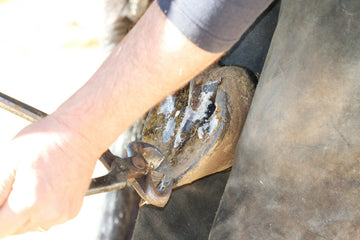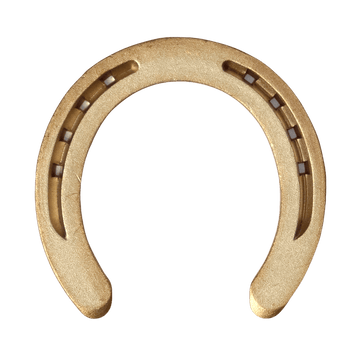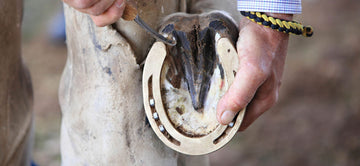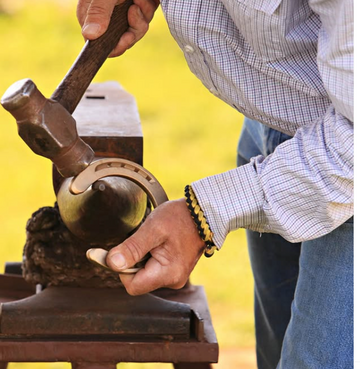A horse hoof abscess is one of the most painful and common conditions that can affect a horse’s feet.
When a bacterial or fungal infection occurs within the hoof, it leads to the formation of pus and swelling, causing severe lameness.
Hoof abscesses can occur in both shod and unshod horses, often resulting in distress for the horse and concern for its owner.
Understanding the causes, symptoms, diagnosis, treatment, and prevention of hoof abscesses is crucial for maintaining a horse’s health and comfort.
What is a Hoof Abscess?
A hoof abscess is a localized infection within the horse’s hoof that results in the accumulation of pus. The horse’s hoof is made up of several layers, including the hoof wall, laminae, and coffin bone.
Abscesses occur when bacteria or fungi infiltrate the hoof capsule, typically through cracks, puncture wounds, or areas where moisture has caused the hoof to soften. The infection causes inflammation and pain, often leading to significant lameness.
Causes of Hoof Abscesses
There are several factors that can contribute to the development of a hoof abscess. The most common causes include:
Trauma and Injury
-
Puncture Wounds: A sharp object, such as a nail, piece of glass, or sharp rock, can cause a puncture wound in the sole or the hoof wall, introducing bacteria into the hoof.
-
Environmental Factors: Excessive moisture, particularly in wet or muddy conditions, can soften the hoof and allow bacteria to enter through gaps in the white line or cracks in the hoof wall.
-
Physical Trauma: Shock to the hoof, such as a heavy impact on hard surfaces, can cause damage to the hoof structure, leading to bruising and creating an entry point for bacteria.
Poor Hoof Care
-
Improper Trimming or Shoeing: Inconsistent or improper trimming can lead to cracks or flares in the hoof wall, providing an entryway for bacteria.
-
Hoof Imbalance: Horses with improperly balanced hooves, such as those with long toes or underslung heels, may be more prone to abscesses due to added pressure on specific areas of the hoof.
Weather and Climate Changes
-
Hot and Dry Conditions: These can cause hooves to become brittle and crack, creating an opportunity for bacteria to enter.
-
Wet and Damp Conditions: Prolonged exposure to wet conditions can cause the hooves to soften, increasing the likelihood of infection.
Symptoms of Hoof Abscesses
Hoof abscesses can develop quickly, and the symptoms are often quite painful. Recognizing the signs early can help prevent further complications.
As the abscess develops, it creates pressure within the hoof, resulting in severe pain and significant discomfort for the horse.
Severe Lameness
The most common symptom of a hoof abscess is sudden lameness. The horse may become reluctant to bear weight on the affected leg. In severe cases, the horse may refuse to walk at all.
Heat and Swelling
-
Heat: The affected hoof is often noticeably warm to the touch, especially around the coronary band (the area where the hoof meets the skin).
-
Swelling: The leg may become swollen, particularly near the coronary band, which is a sign of inflammation caused by the infection.
Pounding Digital Pulse
-
A strong, pounding pulse can often be felt on the affected leg, a common indicator of inflammation and infection.
Sensitive Hoof and Reluctance to Step
The hoof will be very sore, and the horse may exhibit signs of discomfort or pain when it attempts to step on the hoof, indicating that the abscess is causing significant pressure inside the hoof.

Diagnosing Hoof Abscesses
Veterinary Diagnosis with Hoof Testers
Hoof abscess diagnosed requires a thorough examination by a veterinarian. The veterinarian will typically perform the following steps:
-
Physical Examination: The veterinarian will palpate the affected hoof and feel for heat, swelling, and pain.
-
Hoof Testers: A veterinarian will use hoof testers to apply pressure to different areas of the hoof to identify the location of pain.
-
X-rays: In some cases, X-rays may be taken to rule out bone damage or other issues and to confirm the presence of an abscess.
-
Clamp Test: A common method used by veterinarians to diagnose abscesses involves using a clamp to test the integrity of the hoof wall, identifying areas where pus may be trapped.
Treatment and Recovery
Once a hoof abscess is diagnosed, treatment must be initiated promptly to prevent further complications and ensure recovery. The treatment typically involves the following steps:
Draining the Abscess
-
The most effective treatment for a hoof abscess is draining the pus from the hoof. This may involve carefully opening the abscess cavity with a hoof knife to allow the pus to escape.
-
In some cases, the abscess may need to be “ripened” first to encourage drainage.
Cleaning the Hoof Wall
-
The hoof must be thoroughly cleaned and disinfected to prevent further infection. Solutions like diluted iodine or betadine may be used to sanitize the hoof.
Medications
-
NSAIDs (Non-steroidal anti-inflammatory drugs), such as phenylbutazone or flunixin meglumine, may be prescribed to help alleviate pain and reduce inflammation.
-
Antibiotics may also be administered in more severe cases to treat the infection and prevent it from spreading further.
Post-Treatment Care
Once the abscess has been drained, proper aftercare is essential for the horse’s recovery:
-
Keeping the Horse's Hoof Clean and Dry: The horse's hoof should be kept clean and dry to avoid reinfection. Owners may need to apply a hoof bandage or boot to protect the hoof during the recovery process.
-
Refitting the Hoof: Once the abscess has healed sufficiently, the horse’s shoe (if applicable) may need to be refitted to ensure proper fit and support.
-
Rest: The horse will need to be rested during recovery to allow the hoof to heal properly.
Preventing Hoof Abscesses
Prevention is always the best treatment. Taking proactive measures to prevent hoof abscesses can help keep your horse healthy and sound:
-
Regular Hoof Care: Scheduling regular trims and maintaining proper hoof balance is crucial in preventing hoof abscesses. Proper care of the horse's foot is essential to avoid conditions that can lead to abscess formation.
-
Clean and Dry Hooves: Keep the hooves clean and dry, especially in wet conditions. Avoid prolonged exposure to damp environments.
-
Protecting Thin Soles: Horses with thin soles or horses prone to bruising may benefit from hoof boots or protective shoes to help shield the hooves from trauma and bacteria.
-
Adequate Nutrition: A balanced diet with the right minerals and vitamins is essential for maintaining healthy hooves that are strong and resistant to injury.
Complications of Hoof Abscesses
While most hoof abscesses, also known as foot abscesses, can be treated successfully with appropriate care, complications can arise:
Cellulitis
-
Cellulitis, a bacterial infection of the skin and tissue surrounding the hoof, can develop if the abscess is not adequately treated.
Hoof Cracks
-
If left untreated, abscesses can cause hoof cracks or damage to the hoof wall, which can be challenging to treat.
Recurrent Abscesses
-
Some horses may suffer from recurrent hoof abscesses. This may be indicative of underlying health issues such as Cushing's syndrome, which can affect hoof health.
Frequently Asked Questions
How Do You Treat a Hoof Abscess?
Treat a foot abscess by draining the infection, cleaning the hoof, and administering appropriate medications to reduce pain and inflammation. Consult a veterinarian for proper diagnosis and treatment.
What Does the Start of a Hoof Abscess Look Like?
Early signs of horse hoof abscesses include lameness, heat in the hoof, and a pounding digital pulse. The horse may become reluctant to put weight on the affected leg.
Will a Hoof Abscess Burst on Its Own?
While some abscesses may rupture naturally, it's typically better to have a veterinarian open the abscess for drainage to ensure proper healing and to prevent further complications.
Can a Hoof Abscess Go Away Without Draining?
A hoof abscess is unlikely to resolve without proper drainage. If left untreated, the infection may spread, causing further damage to the hoof.
Understanding Hoof Abscess Conclusion
Hoof abscesses are a common but painful condition for horses that require immediate attention. With proper treatment, drainage, and post-treatment care, most horses can recover fully from a hoof abscess.
Regular hoof care, clean and dry environments, and protective footwear can help prevent abscesses from occurring, ensuring the long-term health and well-being of your horse.
Always consult a veterinarian for accurate diagnosis and treatment to avoid complications and promote optimal hoof health.










